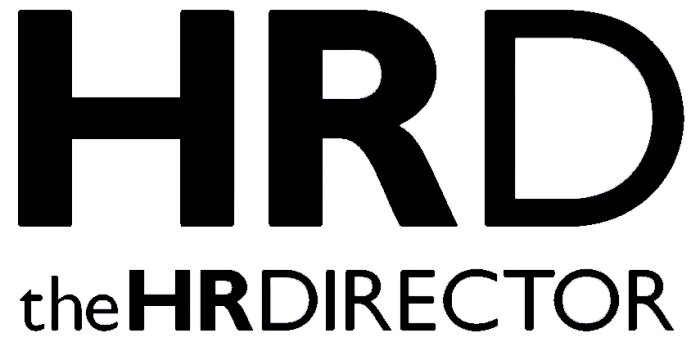Despite the increased investment in mental health resources, employee wellbeing initiatives, and a multitude of workplace perks, too many organisations continue to struggle with burnout, presenteeism, and disengagement. The issue isn’t a lack of effort – it’s that we’re not always addressing the root cause. Without psychological safety, even the most sophisticated mental health strategy is like planting flowers in bad soil: they may look good for a while, but they won’t survive long.
Psychological safety – the belief that it’s safe to take interpersonal risks at work – is a foundational element for any high-performing and healthy workplace. When it’s missing, employees hesitate to speak up, share ideas, admit mistakes, or ask for help. They armour up, disengage, and silently suffer.
This article explores why psychological safety is critical to organisational performance and offers actionable solutions to embed it in the everyday moments that shape the employee experience: from attraction to exit, and beyond.
1. Weaving Psychological Safety into the Employee Experience
Psychological safety must be considered not as a one-off initiative but as a continuous thread woven into each stage of the employee experience.
- Recruitment: Create a safe and inclusive application process by ensuring diverse hiring panels, transparent communication, and candidate feedback loops.
- Onboarding: Use onboarding to set expectations around openness, listening, and vulnerability. Leaders and peers sharing personal stories or past failures can model that imperfection is acceptable.
- Performance Conversations: Shift the tone from judgement to growth. Encourage curiosity and learning in reviews, ensuring feedback is a two-way street.
- Offboarding: Treat exit interviews as safe listening environments. Insights gained here are often the most honest and revealing – if people feel they can speak freely.
Building psychological safety into the whole journey means employees are more likely to feel seen, heard, and supported throughout their time with the organisation.
2. Empowering Everyone to Speak Out and Be Heard
In order to truly foster psychological safety, it needs to be democratised. That means giving people across all levels of the organisation the skills, space, and permission to raise concerns, offer ideas, and challenge the status quo without fear.
- Create safe forums: Town halls, listening circles, interactive focus groups, access to leaders in live Q & A’s, and reverse mentoring can create spaces where voices across all levels are valued. Making sure that listening is done on a regular basis is important to avoid it feeling disingenuous.
- De-stigmatise vulnerability: Use internal communication campaigns to normalise speaking up and share examples of how doing so has led to positive change.
- Train teams in active listening: Help employees move from “waiting to speak” to “genuinely understanding,” especially in high-pressure settings.
When people see that speaking up leads to action, not punishment or tokenism – they’ll do it more often, and more meaningfully.
3. Authentic, Empathetic Leadership Is Non-Negotiable
Leaders set the tone. If employees see senior figures avoiding difficult conversations or punishing those with opposing views, they’ll quickly learn to stay silent.
Empathy and authenticity must be developed and modelled consistently:
- Show vulnerability: Leaders who admit mistakes, share learning moments, and ask for help signal that it’s safe for others to do the same.
- Practice being up-front: Encourage a culture where direct feedback is given with care and received with openness.
- Make space for reflection: Leaders should regularly check in on how psychologically safe their teams feel – and be open to adjusting their behaviours accordingly.
The most successful leaders in today’s workplace are not the ones who have all the answers, but those who ask the right questions and listen to the truths they may not want to hear, as well as being up front when they don’t have the answers.
4. Harnessing Technology to Listen Deeply and Act Meaningfully
Technology offers a powerful opportunity to enhance psychological safety when used with care.
- Anonymous feedback tools: Platforms such as XLeap, Culture Amp or Microsoft Viva can help surface hidden issues and emotional undercurrents without putting individuals on the spot.
- Pulse surveys: Regular, short check-ins can capture shifts in psychological safety and wellbeing over time.
- AI-powered listening: Natural language processing tools can detect sentiment in large volumes of employee feedback, providing real-time insight into morale and trust.
But listening without action erodes trust. The real magic comes when leaders act transparently on feedback and close the loop with their teams.
5. Creative Interventions That Build Behavioural Shifts
Psychological safety must be felt, not just understood intellectually. Creative and emotionally engaging interventions can bring the concept to life:
- Immersive storytelling: Use videos, podcasts or digital simulations that show the consequences (positive and negative) of psychological safety in action.
- Gamified training: Interactive modules that let employees practise giving feedback or challenging assumptions in psychologically safe ways can embed learning deeply.
- Peer-led campaigns: Empower employee ambassadors to champion the cause, share personal stories, and drive local change.
When employees feel emotionally connected to a concept, they’re far more likely to take ownership of it and embed it into daily behaviours.
6. Equipping Line Managers to Be Psychological Safety Champions
Line managers are often the make-or-break factor when it comes to psychological safety. They need targeted, practical support:
- Toolkits: Provide simple conversation guides, escalation protocols, and coaching questions that managers can use in the moment.
- Microlearning: Bite-sized learning on empathy, emotional intelligence, and difficult conversations delivered in-the-flow-of-work makes development sustainable.
- Peer support groups: Facilitate spaces for managers to share challenges, exchange solutions, and build their own confidence in leading safely.
Investing in line managers multiplies your impact, creating a butterfly effect across the organisation.
7. Balancing Prevention and Reaction in Mental Health Support
A psychologically safe environment is inherently preventative – it addresses issues before they become crises. But it must also be part of a well-balanced mental health ecosystem.
- Prevention: Invest in building resilience, training on mental health literacy, and proactive stress management programmes.
- Early intervention: Provide access to coaching, peer support networks, and wellbeing check-ins.
- Crisis response: Ensure Employee Assistance Programmes (EAPs), clinical support, and flexible leave policies are well-communicated and stigma-free.
This balance enables organisations to meet people where they are and support them across the spectrum of wellbeing.
Final Thoughts
Psychological safety is not just a cultural nice-to-have, it’s a strategic imperative for organisations that want to retain talent, drive innovation, and support wellbeing.
It starts with recognising that safety isn’t built by chance, but by design. It’s nurtured through everyday actions, consistent behaviours, and a commitment to listening with empathy and acting with intention.
In an era of uncertainty, rapid change and increasing pressure, psychological safety is the most powerful workplace currency we have. The question is: are we willing to invest in it?







